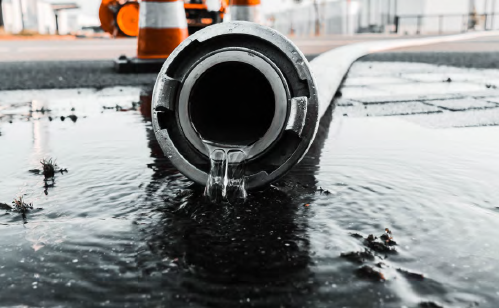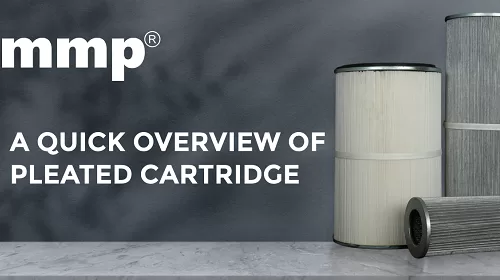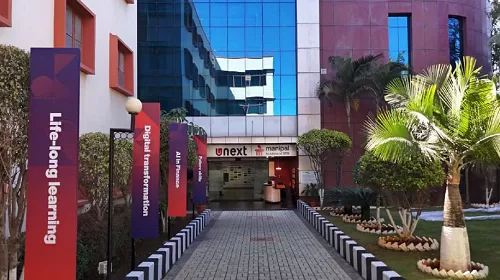By Neeraj Kumar
Septic tanks are wastewater management systems at a smaller and/or personal scale. These are on-site, economical sewage disposal solutions that work well in areas without sewer networks. We can use them in various industries, houses situated in hilly areas, hospitals, outlier buildings, or
A group of four or five houses. It handles solid and liquid organic waste that is drained and flushed down through toilets, bathrooms, kitchens, and other type of drains. There are two ways in which septic systems work. They are either aerobic septic systems or anaerobic septic systems. The write up below will help us to understand more about them, septic treatment, and what problems septic tanks face. This will help most of us to resolve the issues related to septic tanks.
Aerobic Septic Systems
In typical septic systems, wastewater flows to the leach field after leaving the septic tank, where oxygen-phallic bacteria start to work. Aerobic bacteria in the soil eliminates any dangerous substances in the effluent as it is drawn downhill by gravity, preventing them from mixing with clean groundwater. The soil must be in ambient condition with maintained ph. The fundamental distinction between an aerobic treatment system (ATS) and a conventional septic system is that the Former generates treated effluent of higher quality. At the same time, the latter needs smaller leach area.
Anaerobic Septic Systems
Water flushed down the toilet or drain enters your septic tank, which is impermeable. Since there is no oxygen present here, anaerobic microorganisms operate there. The bacteria will disintegrate the waste materials, preparing the wastewater for its next Stop the leach field. In the process of anaerobic digestion, microbes turn solid waste into treated and cleaner effluent. This technique is
Energy-efficient and is less expensive. It is typically used for high-strength industrial effluent with large amounts of biodegradable organic matter. Everything that is alive in this world has a purpose to serve. The bacteria, too, serves a great objective. The organic and faecal matter already consists of good bacteria. When we flush the waste or drain it, many bacteria stick on the surface of the pipelines.
WHAT YOU NEED TO KNOW ABOUT BACTERIA FOR A SEPTIC TANK?
As we have read earlier, bacteria are tiny invisible microbes yet the most vital part of any type of septic tank system. Over the course of septic tank usage, these bacteria colonize everywhere in the
System. When solid or liquid waste matter enters the tank, these bacteria help to degrade the matter in the tank. Thus, the need and perfect balance of healthy bacteria is necessary for maximum septic system efficiency. With repeated actions, they expand their population, the better the colonization of bacteria, and the more efficient degradation of organic matter. But this is not how the system works. There are numerous reasons why the community of bacteria for septic tank gets affected. When the microbial population gets compromised, solid waste begins to accumulate. This causes problems in the septic tank and its functioning; hence, clogging becomes a major issue. Therefore, keeping your septic tank healthy is mandatory for the good health of these bacteria and, overall, for our health as well. Therefore, septic tank cleaning is done.
What Affects Microbial Community? The harsh chemicals that we use
The chemicals we use to clean toilets, bathrooms, sinks, or various other components contain several elements that are harsh for us as well as these bacteria. The substances may include drain opener powder or liquid, bleach, strong acids or bases, ammonia, various surfactants and so on. This causes adverse effects on the bacteria.
Usage of anti-bacterial soaps
Anti-bacterial soaps contain triclosan, triclocarban benzalkonium chloride, benzethonium chloride, and chloroxylenol. These products are used to kill germs from our bodies, but these chemicals end up killing the good bacteria present in the septic tank.
Disposal of medications
Many medicines are composed of substances that are not good for bacterial life. This especially include antibiotics. They are used to treat bacterial infections or fever in humans and animals. There are many instances where medicines are flushed down the drain, when they expire, in other words
When they are of no use and so on.
Disposal of non-biodegradable matter
People carelessly drain/ flush out non-biodegradable substances like cigarettes, pen ink, sanitary pads, tampons, and so on. Unfortunately, this causes hefty damage to bacterial lives, making them less in count and less effective.
How to restore the lives of good bacteria?
For starters, avoid using harsh chemicals like bleach, drain opener powder, ammonia and so on. Avoid draining excess water, medicines, and non-biodegradable matter. To maintain the effects of good bacteria, septic treatment needs to be done efficiently. To increase the microbial population, we can even go for bio augmentation. But before that, let us understand the meaning of bio augmentation and how it is done.
What Is Bio augmentation?
Bio augmentation incorporates organic culture (microorganisms) with the capacity to biodegrade resistant compounds in a polluted environment. Comparing this strategy to physiochemical approaches, it is less expensive and more eco-friendly. Increased levels of live bacteria and
Microorganisms in the treatment environment is how bio augmentation works. Business owners may select cultures as per their need/requirement. For example, they may go for the one known to be particularly effective when handling a particular contaminant. Or they may choose specific microorganisms that are considered to be having high levels of effectiveness in this area.
Benefits of Bio augmentation
• Compared to other types of methods of restoration of bacteria, this method seems more cost friendly.
• This process involves additional leverages like septic tank odour removal, working in most environmental conditions and so on.
• Since there is no use/wastage of energy, bio augmentation reduces carbon footprint.
• They are self-sufficient as once they are added, they do not require any additional type of manpower.
• Once added, the bacteria keeps on doing its function.
• You don’t need extra containers or reactors to clear up the mess. Bio augmentation can be done at the site.
How Can You Do Bio augmentation?
Now you don’t have to worry about how septic treatment can be done with the help of bio augmentation. With our renowned Bio Reme Septic, you can restore microbial life with many other
Benefits. Bio Reme Septic consists of a wide variety of naturally selected anaerobic and facultative bacterial consortium that degrades organic waste from septic tanks. It is a single celled microorganism that rapidly increase their population once they get their food (organic matter). The product has a shelf life of 24 months. This product can be used in households, commercial spaces, portable toilets, soak pits, holding tanks and so on. Below mentioned are some of the products that one can look at.
Benefits of Bio Reme Septic
• Septic tank odor removal – Over the course of time, the septic tank begins to produce odour. This product helps eliminate odour.
• Prolongs their existence- These microbes can withstand the cleaning chemicals like bleach, detergent, grease, oil and so on.
• Effective under most environmental conditions.
• Naturally restores the biological health of the bacteria.
With advancements in the world, there has been much awareness about waste management. Hence, we also need to know how to maintain these waste treatment plants. Different Bio Reme
Products can act as an aid in the maintenance of different waste treatment plants. For example, when discussing septic tank cleaning and maintenance, Bio Reme Septic will help keep septic lines and drain fields clean by reducing presence of undigested organic debris. It also improves the life
Span of the septic tank and lets it work efficiently.
Bio Reme Just Drop
Bio Reme just drop is a scientifically selected dry formulated bacteria culture that contains billions of active bacteria in a “self-dissolving packet” that produces various enzymes needed to decompose
solid waste such as (fat, oil & grease, hair, toilet paper, soap scum, organic materials, toothpaste, shampoo residue, body oils, calcium & lime build up, rust, flushable baby wipes, iron build up) from
Kitchen drains. These self-dissolving packets produce various enzymes that are needed to reduce and decompose solid waste and maintain proper functioning of septic tanks, portable toilets, bio toilets and





